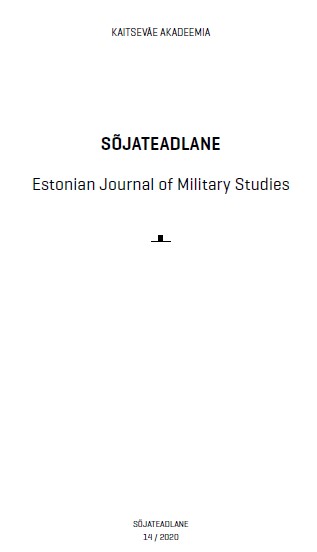KAITSEVÄELISE JUHI PÄDEVUSMUDEL
THREE-DIMENSIONAL MODEL OF LEADER COMPETENCIES IN MILITARY CONTEXT
Author(s): Ülle Säälik, Aarne Ermus, Ivar Männamaa, Liisi Toom, Antek KasemaaSubject(s): Security and defense, Psychology of Self, Behaviorism, Management and complex organizations
Published by: Kaitseväe Akadeemia (KVA)
Keywords: leader development; relationship; change and task-oriented competencies; competency development;
Summary/Abstract: In the field of organizational theory and practice, leadership is gaining more and more attention as an object of research (Bratton, 2020: 12). Our societies are changing and becoming progressively people-centered and value-based. As a result, leadership is increasingly viewed from the viewpoint of employees, placing greater value on their wellbeing, motivation and dedication. In the context of the defence forces, the core features of leadership are going through a transition from the traditional autocratic style (e.g., Gill, 2011) in favour of an approach placing greater value on the development of human resources (e.g., Hawkins, 2011), consequently requiring a different set of competencies from military leaders. The contemporary security environment requires military leaders to operate in nonlinear environments characterised by the following keywords: dynamic, complex, multicultural, and so forth. Due to that, military leaders are expected to master a wide range of competencies. For example, modern leaders must have a comprehensive understanding and the ability to solve complex problems, as well as communicate effectively to subordinates or colleagues. In addition, leaders must be flexible and adapt efficiently to changing circumstances, capable of undertaking activities with objectives, as well as having a deeper understanding of social processes, not to mention the effective means of handling them. Finally, competent leaders exhibit a growth mindset, i.e., seeing both themselves and others as subjects of continuous development. Moreover, these competencies are often applied in highly stressful situations that also entail the consideration of ethical principles and underlying values. Taking guidance from previous research on leadership (e.g., Katz, 1974; Singh, Chan & Lim, 2006; Walker, 2006, etc.), and taking into account organisational needs – in our case the Estonian Defence Forces – as well as those arising from larger social changes, this article aims to put forward a competence model for military leaders in the Estonian Defence Forces (EDF). The proposed model covers three central domains: task-oriented, relationship- oriented and change-oriented competencies. Each domain comprises two interconnected competencies: technical (professional) and management competency; interpersonal and intrapersonal competency; leadership and conceptual competency. These, altogether six competencies, are further broken down into specific skills, knowledge, and attitudes (ethical and value-based). In the first pairing, technical (professional) competency is best illustrated by the following sentence: the way things are done in the armed forces (EDF). This includes everything related to technical systems (e.g., weapons), as well as procedural systems (e.g., communication or command procedures). On the other hand, management competency can be described through the application of effective management functions such as planning, organising, command and control. This competency requires operational resolve and adherence to set objectives. The second pairing includes the leader’s interpersonal competency that refers to understanding social context and the ability to choose the most suitable means of communication depending on the situation or participants, including in a multicultural context.
Journal: Sõjateadlane
- Issue Year: 2020
- Issue No: 14
- Page Range: 11-38
- Page Count: 28
- Language: Estonian

